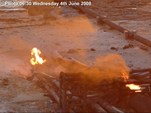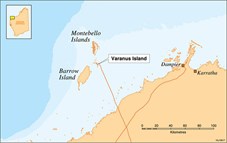In February 2000, McDonald’s Australia Limited was fined $120,000 in the Industrial Relations Commission in Sydney and the lessor of the Wollongong restaurant, McDonald’s Properties (Australia) Pty. Ltd, was fined $150,000. Lyndhurst Trading Co Pty. Ltd, leased the restaurant and owned and operated the clamshell grills which electrocuted 19-year old, and was fined $40,000.
According to a report by Jennie Mansfield, senior associate with Blake Dawson Waldron in October 2000
Michael Johnston was a 19 year old employee of Lyndhurst Pty Limited (the employer), a franchisee operating a McDonald’s restaurant in Wollongong on the South Coast of New South Wales. Johnston … was fatally electrocuted while cleaning behind a clamshell grill – standard equipment in McDonald’s restaurants.
Since installation, the grill had been pulled away from the wall every night for cleaning, and over time the cable attaching it to the power outlet contractors and fast food had become abraded. There was no accessible isolation switch in place and Johnston was electrocuted when he touched the exposed inner core of the cable while the power was still connected.
I was reminded of Michael Johnston’s death when I was told of a successful prosecution in New South Wales on 2 June 2008.
A Salamander Bay resort hotel has been fined $150,000 and its three directors $12,000 each following the electrocution of a 13-year-old boy at the hotel’s pool in December 2002.
The local boy and a friend were playing in the Salamander Shores Hotel pool without the permission of the staff when a tennis ball was thrown outside the pool fence.
The 13-year-old received an electric shock when climbing back over the pool fence to retrieve the ball, and died later of his injuries.
A WorkCover investigation concluded that the boy had stood on a corroded section of pipe carrying electrical wiring, which collapsed and cut through the insulation.
Both situations involve a lack of adequate maintenance and equipment checking. Two deaths because of the invisible, but foreseeable, hazard of electricity and inadequate management.
Michael Johnstone had been a McDonald’s employee for 2 weeks. The 13-year-old was simply playing with a mate.


